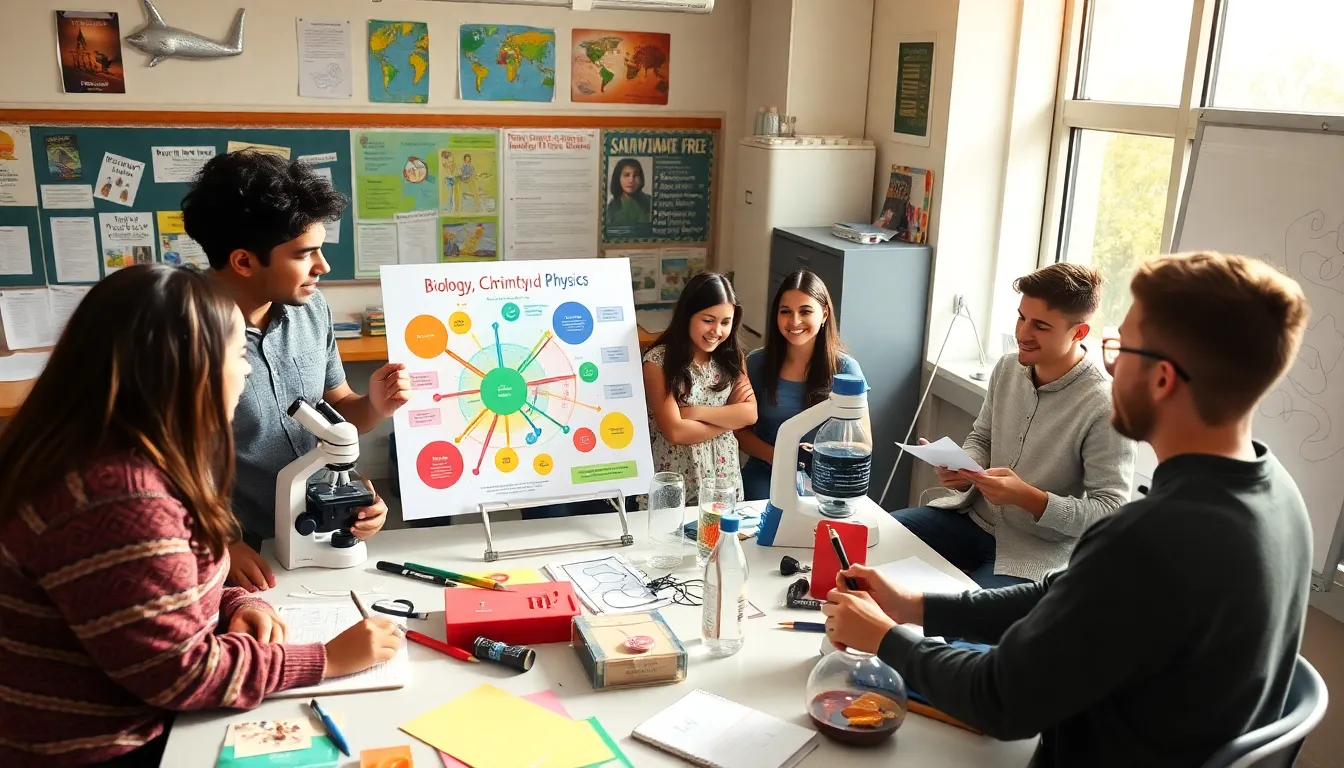Integrated science represents a transformative approach to scientific study, combining various disciplines to enrich understanding and problem-solving abilities. In an increasingly complex world, the boundary between scientific fields is diminishing, paving the way for collaborative methods that enhance learning and innovation. This article delves into the core aspects of integrated science, its implications for education, and its significance in addressing real-world challenges.
Table of Contents
ToggleOverview of Integrated Science

Integrated science refers to an educational framework that merges knowledge and methodologies from various scientific disciplines into a cohesive learning experience. This interdisciplinary approach not only emphasizes the interconnectedness of science but also fosters critical thinking skills essential for modern problem-solving. Rather than treating subjects like biology, chemistry, and physics as isolated entities, integrated science seeks to highlight their relationships, providing students with a more holistic perspective.
In a traditional educational setting, these disciplines are often segregated, which can lead to a disjointed understanding of scientific concepts. Integrated science aims to bridge these gaps, offering a curriculum that underscores substantive connections among the fields. This inclusive approach can spark greater interest in science among students by showcasing real-world applications that reflect the complexities they encounter in their everyday lives.
Key Components of Integrated Science
Several components form the backbone of integrated science:
1. Interdisciplinary Collaboration
Integrated science promotes collaboration among different scientific disciplines. By working in tandem, these fields can tackle multifaceted problems more effectively than through isolated practices.
2. Problem-Based Learning
Curriculum design often includes problem-based learning, where students engage with real-world issues. This method encourages innovative thinking and application of knowledge across disciplines.
3. Experimental and Hands-On Activities
Experiential learning is central to integrated science. Students participate in labs and fieldwork, reinforcing theoretical knowledge through practical application. This engagement helps solidify their understanding and enhances retention of information.
4. Focus on Skills Development
The integrated science curriculum emphasizes critical skills such as analysis, evaluation, and collaboration. These competencies are vital for both academic and professional success.
Importance of Interdisciplinary Approaches
Interdisciplinary approaches in integrated science are crucial for several reasons:
1. Complex Problem Solving
Today’s global challenges, climate change, health crises, and technological advancements, require holistic solutions. By integrating knowledge from multiple disciplines, students learn to think critically and creatively about these issues.
2. Enhanced Engagement
When students see the practical implications of their studies, their interest in science often increases. Interdisciplinary learning makes science relevant to their lives, so enhancing engagement and retention.
3. Preparation for Future Careers
Many modern careers demand a synthesis of knowledge from various fields. Integrated science education equips students with a well-rounded skill set that is applicable across multiple domains, making them more competitive in the job market.
Applications of Integrated Science in Real World
Integrated science has a multitude of real-world applications that demonstrate its practical benefits:
1. Sustainability Initiatives
Projects aimed at promoting sustainable practices often involve biology, chemistry, and environmental science. By understanding ecological systems and the effects of chemicals, students explore solutions to pressing environmental issues.
2. Health Sciences
In public health, integrated science plays a pivotal role. Issues like disease outbreaks require knowledge of biology, social sciences, and even technology, showcasing how interconnected these fields are.
3. Engineering and Technology
Engineering practices draw heavily from physics, mathematics, and computer science. Integrated science not only facilitates understanding in these areas but also encourages innovation by combining principles from diverse fields.
Challenges in Implementing Integrated Science
Even though its advantages, implementing integrated science faces several challenges:
1. Curriculum Development
Creating an integrated science curriculum that aligns with educational standards can be complex. Educators must develop materials that effectively cover content while promoting interdisciplinary connections.
2. Teacher Training
Effective instruction in integrated science requires educators who are well-versed in multiple disciplines. Professional development and training for teachers can help them acquire the necessary skills and mindset.
3. Resistance to Change
Many educational institutions are hesitant to modify traditional teaching methods. Overcoming this resistance requires demonstrating the value of integrated science and its ability to enhance student learning outcomes.
Future of Integrated Science in Education
Looking ahead, integrated science is poised to evolve further within educational systems. As technology advances and educational paradigms shift, the need for interdisciplinary learning will become increasingly evident. Future trends may include:
1. Increased Use of Technology
Incorporating technology in the classroom can help deeper explorations of integrated science. Virtual labs, simulations, and data analysis tools can enhance the learning experience and provide students with hands-on opportunities.
2. Global Collaborations
Education systems around the world are recognizing the benefits of integrated science, prompting collaborations across borders. International projects can foster collective problem-solving and shared learning experiences.
3. Focus on Sustainability
As global focus shifts toward sustainability, integrated science will take center stage in addressing environmental challenges. Educational programs that emphasize these issues will prepare students to become proactive global citizens.
Conclusion
To conclude, integrated science is more than just an educational approach: it is a necessary evolution in how we understand and apply scientific knowledge. By breaking down silos among disciplines, integrated science equips students with the skills required to tackle real-world challenges and prepare for diverse career trajectories. As education systems embrace this interdisciplinary approach, the promise of a more engaged and knowledgeable generation of scientists and problem-solvers becomes more attainable.



